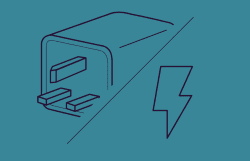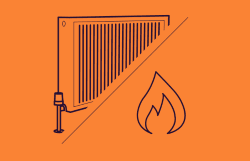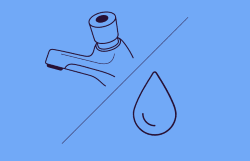Landowners in the UK have an exciting opportunity available to them.
If you haven’t heard of Solar Farm Partnerships yet, don’t worry. We at Energy Solutions will explain everything that you need to know about leasing your land for solar farm development in the UK
The Background to Solar Farm Partnerships
We have many clients from a variety of different backgrounds.
Some of these, we are proud to say, are UK farmers and landowners. We have had so many positive conversations over the years with them filled with excitement for developing an energy project that would provide them a secure income stream from their land.
In short, we explain how landowners who lease their land for a solar farm development usually agree to a 40-year long partnership. Payments occur on an annual basis, which creates a long-term, stable, and predictable income.
Oh, and it’s also index-linked – meaning your income will rise with inflation.
Usually, our clients are hooked at this point. But we feel it is important to give our clients all of the information available to them, and explain what it means.
There are four key stages in the lifecycle of a solar farm; planning, construction, maintenance, and end of life. The key questions we are always asked by clients is – how involved do I have to be in each of these stages, and how will the new solar farm impact my wider farm operations?
In this article, we’ll give a breakdown of what is involved at each stage of the solar farm lifecycle and answer these questions and more.
Stage one – Planning
I’m interested in a conversation about leasing my land for solar development, what will you want/need to know?
During initial conversations, we’d really just need to know the basic information to get the ball rolling. Contact details are a must, and so too is how much land you are considering on leasing and where it is. If it could be identified on a map then that would be ideal. Other bonus information would be if you knew of any grid infrastructure nearby.
Following on from this, we will go away and look at whether the land is suitable for a solar farm. If the land fits the bill then we will arrange a site visit. We’d then look for you to sign a Letter of Authority for the local electricity network operator (DNO), which will give us permission to speak to them about the technical details of connecting a solar installation on your land.
If my land is suitable to explore a solar farm, what happens next?
If the land is suitable and you remain interested in pursuing the project, then we will ask you to sign some documentation that will grant us an ‘option’ over the land. Essentially, this gives us a set amount of time to secure the necessary consents – usually 2 to 3 years with options to extend. Once consents have been granted we will enter into a lease agreement with you and begin construction.
How involved do I have to be?
We will manage the full planning, construction, and maintenance process on your behalf and keep you well up to date on the progress. There may be some occasions in which it would be useful to have some involvement. For example, when we are conducting public consultations of speaking with the local parish council.
Ultimately, we are looking for a long-term, positive relationship with you and your local community. If there are concerns from neighbours over plans then we know from experience that it is better to address these earlier rather than later.
Further to this, we recommend that you take independent legal advice on the legal and tax implications of the solar farm project.
Stage two – Construction
Will constructing a solar farm impact my other farming operations?
By working together with you, we will agree a construction timeline that works best for you and fits around your farming cycle. If you already have crops in the ground then we can hold a discussion on holding off entering the lease until after harvesting.
During the planning process, we would also seek to work with the local community to agree a traffic management plan for construction vehicles to minimise the disruption to neighbours.
It is also possible for sheep to graze around the solar installation, so it is possible to get dual-use out of the land. If that is something you are interested in doing then you will need to let us know as early as possible so we can construct in the most appropriate way. Potentially this would be installing a little higher off of the ground so that there is room to move beneath, or more ducting on the cabling to prevent them from being chewed.
Will the construction of a solar farm damage my land?
We consider it a privilege to be trusted with our clients land, so know it is our duty to protect it. We take this responsibility very seriously.
The ground conditions of the land will determine what construction method we have to take, but the preferred method is to pule steel posts into the ground to a depth of a meter and a half. The solar panel frames are then affixed to this. We prefer this approach as it causes the absolute minimum amount of damage to the ground.
If this approach is not possible, then there are other work arounds we would be happy to discuss.
We assure all of our installations are safe, while enhancing the biodiversity of your land. This can be from improving hedgerows, introducing wildflower seeding, or something else entirely.
How do I know you’re not just going to disappear half-way through construction?
Well, our client reviews and record speaks for itself.
You can rest assured that we are in it for the long term.
Stage three – Maintenance and Optimisation
How much maintenance will happen on-site when the solar farm is in-situ?
Grass cutting will happen a few times per year if you are not grazing sheep, and hedges will need to be managed. If you prefer to complete this work yourself then we can discuss it as part of the lease agreement.
We will also come to site to clean the solar panels so they operate at maximum performance. Most of our monitoring systems will keep track of this remotely, but we will still be on site several times a year for physical checks.
What remote maintenance will you do on the solar farm?
Our remote monitoring software monitors the performance of the solar farm. If we notice an underperformance then we will send someone out to the site to get the problem solved ASAP. This will keep your site working to its best.
Stage four – End of Life
What happens when the lease comes to an end?
Most of our partnerships will last for 40 years or so. At the end of the partnership we will ensure that the solar farm is removed in its entirety, and the land is put back in at least as good a state as it was before. If concrete was used then we will remove it, alongside cabling, panels, and frames.
You may also see some improvements to the site in the terms of increased biodiversity and enhanced hedges.
Ready to take the next step?
At Energy Solutions, we can help you work out whether a renewable energy development on your land is likely to be successful. To find out more, please contact our team.
Energy Solutions by Us, for You
At a time of great uncertainty in global energy markets, it is easy to feel lost in it all.
Keeping up to date with developing situations and the associated ramifications is a tricky and time-consuming job. It is also one that is not likely a priority for you and your business.
So, what do you do?
You partner with energy procurement experts to take the load off your desk.
Energy Solutions have been trusted brokers for countless businesses for over twenty years, which means we know how to navigate the energy markets during a time of uncertainty.
Contact us today to find out how we can help you and your business
Website: https://www.energybrokers.co.uk/
Contact Us: Click Here
Email: nick@energybrokers.co.uk
Call Us: 0131 610 1688
WhatsApp: 07757 400 788




